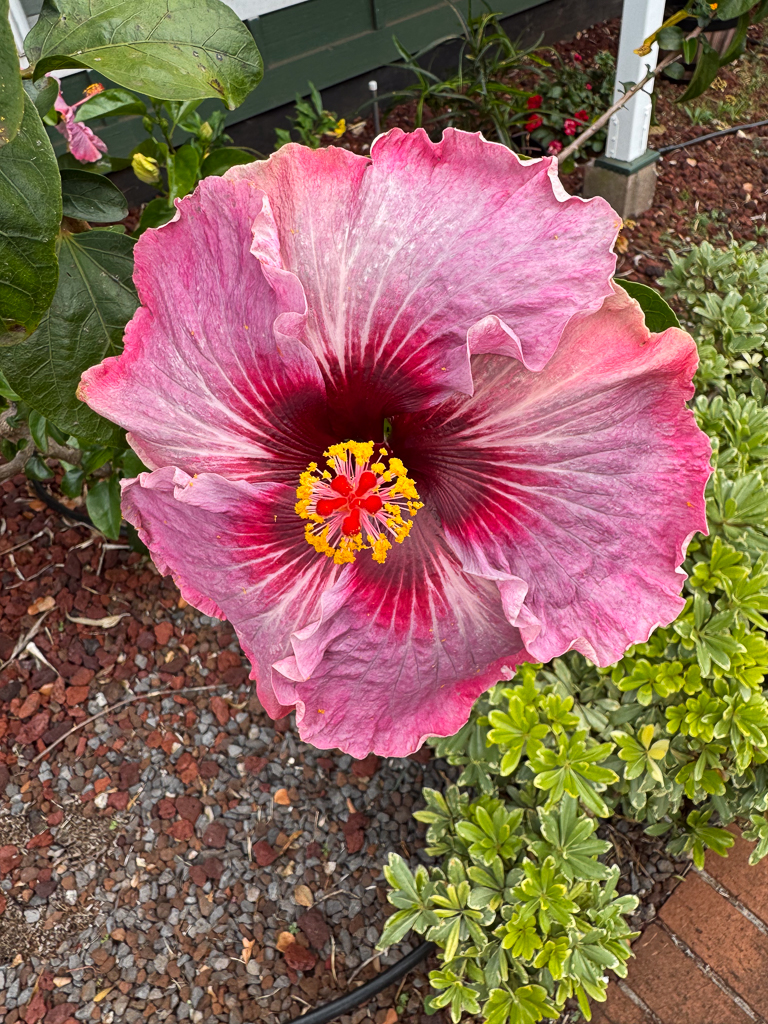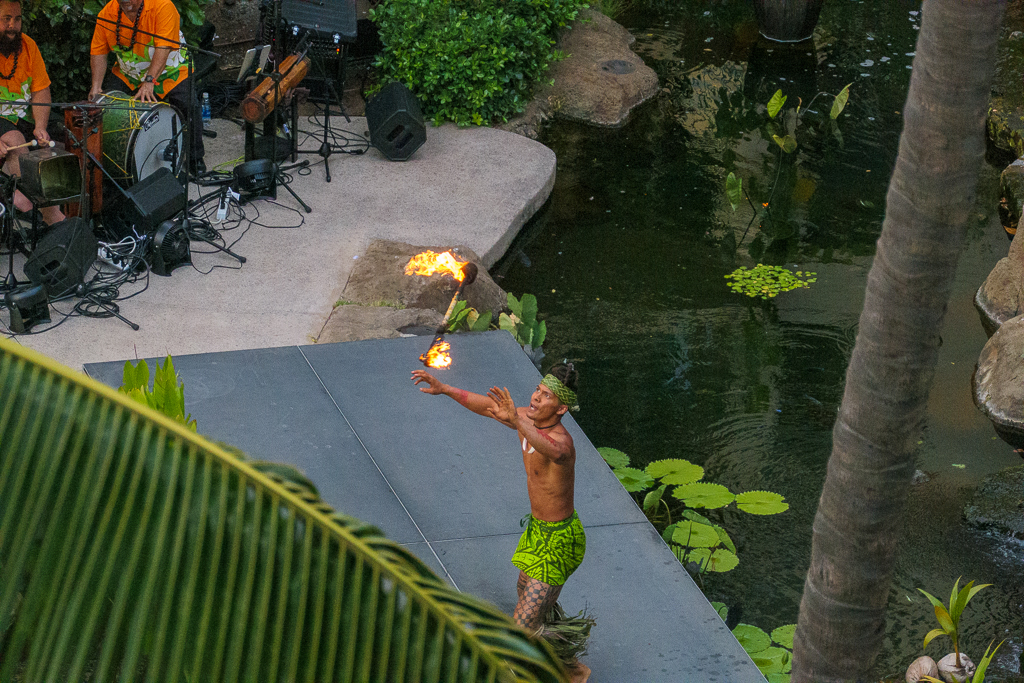It’s our 48th anniversary, and we began our celebration with a couples massage in the Upcountry at Ho’omana Spa a few miles up Piiholo Road from Makawao. It usually takes an hour to drive there from the Westin, but they warned us of tree-trimming on Piiholo Road and asked us to leave early.
We didn’t encounter the tree-trimming until we were about 50 yards from their driveway, and the crew had left a lane free, so we got there in plenty of time and had a wonderful massage – it was our second time at Ho’omana Spa, and I highly recommend them.
We were relaxing with lemongrass tea after the massage when the receptionist told us that one of their employees was stuck near Makawao waiting for Piiholo Road to be opened again. We enjoyed some more tea and some more relaxation until the employee (and a few customers) arrived, then got into the car and started driving down to Makawao.
We traveled nearly 100 yards before stopping – a tree had fallen onto a power line, and they had the entire road blocked to remove it. They hoped it would only take an hour or so to open the road again. We had two choices: sit in our car, or go back to the spa and wait in comfort. We went back.
It turns out there was an alternate route available. Instead of driving down Piiholo, we could go up the road for a few miles, past the end of county maintenance, and eventually take a different road down to Makawao. Don’t tell Hertz, but we took the alternate route and eventually reached Makawao, where we had very nice ono salads for lunch at Makawao Garden Cafe, did some shopping, and enjoyed seeing the flowers.

We had an uneventful drive back to the resort. It took, as expected, about an hour.
